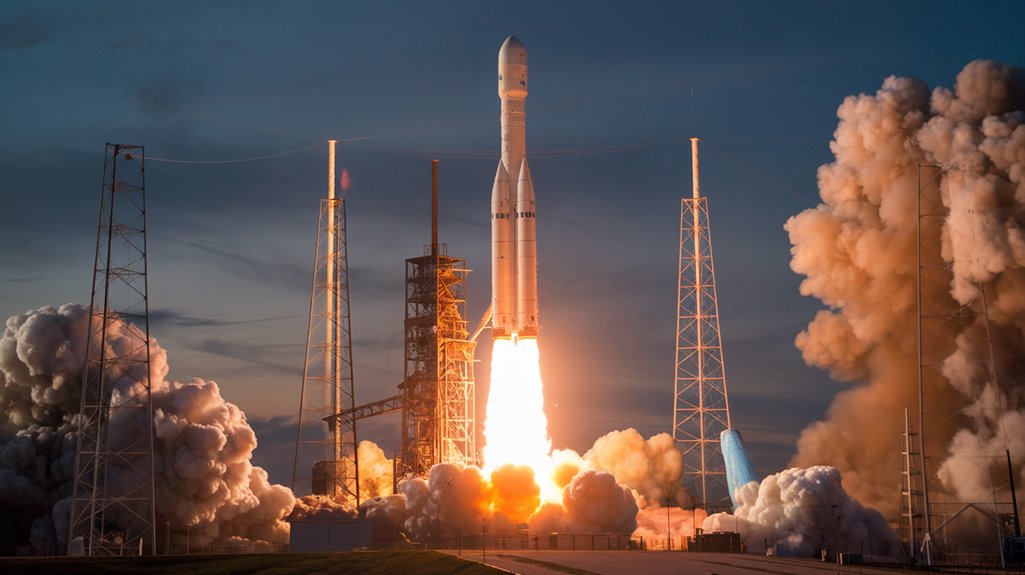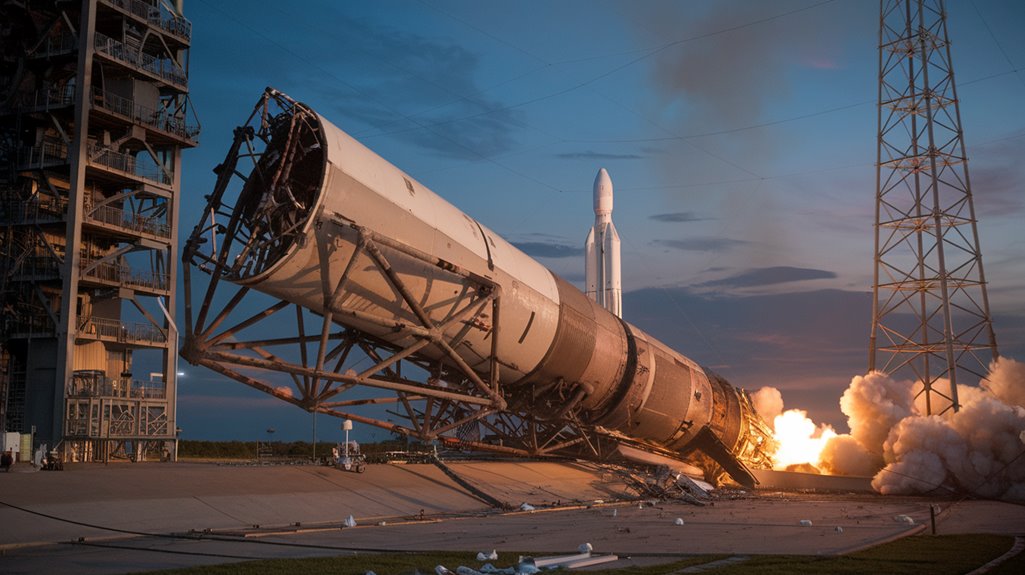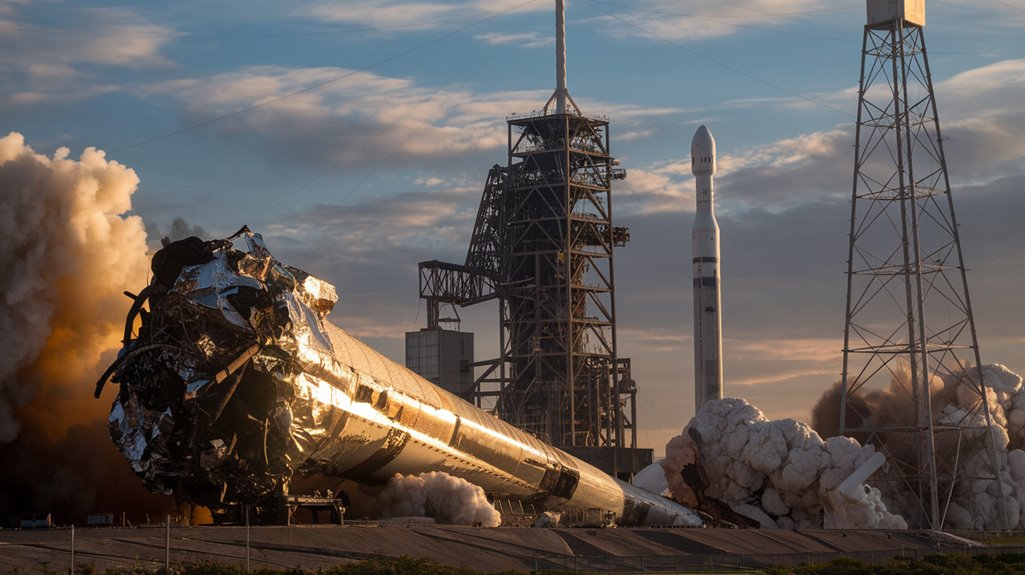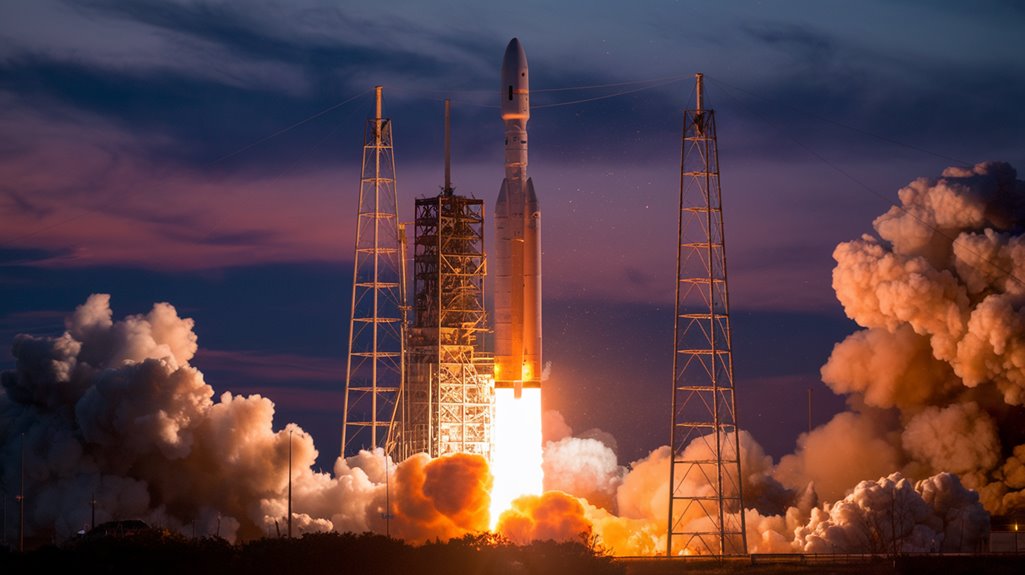Kaputnik: America’s Launch Failure That Blew Up
You've probably heard about America's greatest space achievements, but have you considered one of its most embarrassing moments? In December 1957, as the world watched the United States attempt to answer the Soviet Union's Sputnik success, a rocket called Vanguard TV-3 barely left the launch pad before erupting in flames. The incident, mockingly dubbed "Kaputnik," didn't just damage American pride—it fundamentally changed how the U.S. would approach its space program for decades to come.
The Cold War Space Race and Sputnik's Shadow

When the Soviet Union launched Sputnik 1 on October 4, 1957, they didn't just send a satellite into orbit – they sparked a technological panic across America.
The beeping spacecraft became a symbol of Soviet superiority that shattered your nation's confidence in its scientific prowess. You couldn't escape the wave of American anxiety as media coverage amplified fears about falling behind in the Cold War. Americans worried that rockets capable of launching satellites could deliver nuclear warheads to U.S. soil.
President Eisenhower responded by pouring money into the space program, but the damage to American prestige was already done.
The Soviets followed up their triumph with Sputnik II, launching the first living creature into space. The Soviet space program continued its string of victories when Yuri Gagarin orbited Earth in April 1961, becoming the first human to reach space. Suddenly, you were witnessing more than just a scientific achievement – it was a Cold War propaganda victory that demonstrated the USSR's missile capabilities and sparked an unprecedented space race between global superpowers.
Behind the Vanguard TV-3 Mission
After months of meticulous preparation, Project Vanguard TV-3 emerged as America's high-stakes response to the Soviet space triumph. The mission's launch objectives were twofold: to demonstrate U.S. technological prowess and conduct essential scientific research during the International Geophysical Year. The program was managed by the US Naval Research Laboratory under civilian oversight.
The first attempt at launch resulted in a catastrophic failure when the rocket reached only 1.2 meters high before losing thrust and exploding on the pad.
You'll find the satellite design was elegantly simple: a 1.5 kg aluminum sphere measuring 16.3 cm in diameter, packed with transmitters and instruments.
The three-stage rocket stood 72 feet tall, combining liquid and solid fuel technologies. The first stage used a modified Viking rocket with a GE X-405 engine, while the second stage featured an Aerojet-General AJ-10.
The final stage utilized a solid-fuel Altair rocket, designed to push the tiny satellite into its intended 345-mile orbit.
The Spectacular Launch Day Disaster
The morning of December 6, 1957, brought anticipation and tension to Cape Canaveral as America prepared to launch its answer to Sputnik.
After hours of delays on launch day, the Vanguard TV-3 finally lifted off at 11:44 AM, only to rise a mere four feet before crashing back onto the pad in a spectacular explosion.
The failure was attributed to low fuel tank pressure during the rocket's start sequence.
You'd have witnessed these dramatic moments unfold:
- The rocket's devastating fall back to Earth
- A massive fireball reaching 150 feet high
- Black smoke billowing across the launch site
- The satellite tumbling away from the wreckage, still broadcasting signals
The disaster response was swift as automatic extinguishers activated, spraying water and carbon dioxide to combat the flames.
Soviet diplomats at the UN mockingly offered technical assistance to the United States following the catastrophic failure.
Dr. J. Paul Walsh immediately reported the failure to Washington while observation pilots circled above, documenting the catastrophic scene.
Media Frenzy and Public Reaction
The media coverage was particularly devastating because the launch had been broadcast live, with hopeful spectators watching as their dreams literally went up in flames.
Scientists were inundated with so much information that they struggled to analyze all the technical data from the failed launch.
Soviet propaganda seized the opportunity, as the Communist nation mockingly labeled the failed launch with names like Flopnik and Kaputnik.
Public sentiment plummeted, and even Senator Lyndon B. Johnson called it "most humiliating."
The blow to American pride was so severe that the New York Stock Exchange temporarily suspended trading of the Martin Company's stock, reflecting just how deeply this failure resonated with the nation.
Technical Analysis of the Failure

Behind the public embarrassment lay a complex technical failure that would reshape American rocket engineering. The primary culprit was a catastrophic breakdown in the rocket's fuel system, triggered by insufficient tank pressure during the launch sequence.
Here's what went wrong in those pivotal moments:
- Low fuel tank pressure allowed hot combustion gases to back up into the injector head.
- The injector failure caused a devastating pressure spike.
- The combustion chamber ruptured, cutting off engine thrust.
- The rocket fell back and exploded, destroying both vehicle and launch pad.
You might be surprised to learn that GE technicians also discovered a loose fuel connection contributing to the disaster. The test vehicle utilized a unique combination of liquid oxygen and ethanol as primary propellants in its first stage. The rocket's first stage was powered by a General Electric X-405 engine, which was derived from earlier Viking rocket designs.
The team's solution involved increasing tank pressure and adding ethane gas to prevent rough starts – modifications that proved successful in all subsequent launches.
Rising From the Ashes: the Path Forward
Despite its humiliating debut, Project Vanguard emerged stronger from the ashes of failure. The program's resilience strategies paid off when Vanguard 1 successfully reached orbit on March 17, 1958, proving that setbacks couldn't halt America's space ambitions.
You'll find that this recovery taught critical innovation lessons that shaped future space exploration.
The program's influence extended far beyond its initial mission. Vanguard's upper stages became the foundation for several launch vehicles, including the Atlas-Able and Thor-Able rockets.











